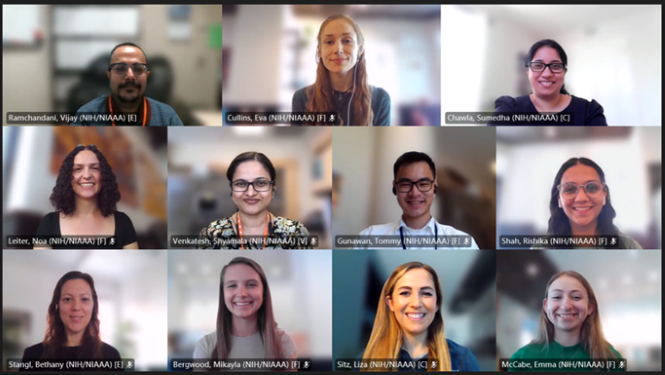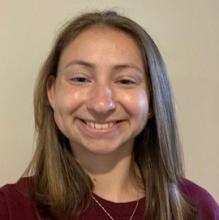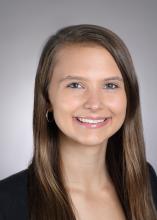Laboratory on Human Psychopharmacology (HP)


Contact Information
- Mailing Address
Section on Human Psychopharmacology
National Institute on Alcohol Abuse and Alcoholism
10 Center Drive, Room 10-CRC/2-2352: MSC 1540
Bethesda, MD 20892-1540
Overview of the Lab
What we do
Alcohol use disorder (AUD) has a tremendous negative individual and global impact, and there is an urgent need to understand its etiology and to advance treatment for this devastating illness. Research on the clinical pharmacology of alcohol is necessary to explain how variability in alcohol response affects the risk of developing AUD. The premise underlying the research conducted by the Section on Human Psychopharmacology is that an improved understanding of the genetic, environmental, and neurobiological factors that affect alcohol response in humans could lead to the development of novel treatments.
The three main research goals of our work are: (1) to identify determinants of variability in the clinical pharmacokinetics and neuropsychopharmacological effects of alcohol as they relate to the risk for developing AUD; (2) to decipher the relationship between the neurobiological domains underlying AUD and variation in pharmacodynamic response to alcohol; and (3) to develop and apply human laboratory paradigms to screen novel potential treatments for AUD.
Two alcohol administration paradigms, co-developed by the Section, provide a unique platform for this research: (1) the alcohol clamp, and (2) intravenous alcohol self-administration (IV-ASA) using the computer-assisted alcohol infusion system (CAIS). Both methods employ IV infusion of alcohol using a physiologically-based pharmacokinetic algorithm that results in exquisitely-controlled systemic (including brain) profiles of alcohol exposure. The alcohol clamp paradigm offers unique opportunities to time-lock presentation of stimuli and assessment of behavioral and imaging-based outcomes to specific phases and levels of alcohol exposure. Several IV-ASA paradigms enable the characterization of alcohol seeking and consumption behaviors that are primarily driven by the pharmacological effects of alcohol. These human lab paradigms can be combined with physiological, psychological, neuroendocrine and neuroimaging measures, to identify genetic and environmental determinants of AUD.
Clinical Protocol
08-AA-0178: Computer-Assisted Self-Administration of Ethanol (CASE) in Humans (PI: Vijay A. Ramchandani, PhD)
16-AA-0037: Effect of Opioid Receptor Modulation on Alcohol Self-Administration and Neural Response to Alcohol Cues in Heavy Drinkers: Role of OPRM1 Gene Variation (PI: Vijay A. Ramchandani, PhD)
17-AA-0171: Nicotinic Receptor Genetic Variation and Alcohol Reward (PI: Vijay A. Ramchandani, PhD)
20-AA-N115: COVID-19 Pandemic Impact on Alcohol (PIA) – A Natural History Study (PI: Vijay A. Ramchandani, PhD)
View a video here.
Lab Members

















Selected Publications
Original Papers
- Ramchandani VA, Bolane J, Li T-K, O'Connor S. A physiologically-based pharmacokinetic (PBPK) model for alcohol facilitates rapid BrAC clamping. Alcohol Clin Exp Res 23:617-623 (1999).
- Gilman J, Ramchandani VA, Davis M, Bjork JM, Hommer DW. Why we like to drink: An fMRI study of the rewarding and anxiolytic effects of alcohol. J Neurosci. 28:4583-4591 (2008).
- Ramchandani VA, Umhau J, Pavon FJ, Ruiz-Velasco V, Margas W, Sun H, Damadzic R, Eskay R, Schoor M, Thorsell A, Schwandt ML, Sommer WH, George DT, Parsons LH, Herscovitch P, Hommer D, Heilig M. A genetic determinant of the striatal dopamine response to alcohol. Mol Psychiatry 16:809-817 (2011).
- Gilman JM, Ramchandani VA, Crouss T, Hommer DW. Subjective and neural responses to intravenous alcohol in young adults with light and heavy drinking patterns. Neuropsychopharmacology 37:467-477 (2012).
- Vatsalya V,* Gowin JL,* Schwandt ML, Momenan R, Coe MA, Cooke ME, Hommer DW, Bartlett SE, Heilig M, Ramchandani VA. Effects of varenicline on neural correlates of alcohol salience in heavy drinkers. Int J Neuropsychopharm 18: pii: pyv068. doi: 10.1093/ijnp/pyv068 (2015).
- Stangl BL, Vatsalya V, Zametkin M, Cooke ME, Plawecki MH, O’Connor S, Ramchandani VA. Exposure-response relationships during free-access intravenous alcohol self-administration in non-dependent drinkers: Influence of alcohol expectancies and impulsivity. Int J Neuropsychopharm 20:31-39 (2017).
- Gowin JL*, Sloan ME*, Stangl BL, Vatsalya V, Ramchandani VA. Vulnerability for Alcohol Use Disorder is Associated with Rate of Alcohol Consumption. American Journal of Psychiatry 174:1094-1101 (2017).
- Sloan ME,* Gowin JL,* Janakiraman R, Ester CD, Stoddard J, Stangl BL, Ramchandani VA. High-risk social drinkers and heavy drinkers display similar rates of alcohol consumption. Addict Biol doi: 10.1111/adb.12734. [Epub ahead of print] (2019).
- Kwako LE,* Schwandt ML,* Ramchandani VA, Diazgranados N, Koob GF, Volkow ND, Blanco C, Goldman D. Neurofunctional domains derived from deep behavioral phenotyping in addiction. American J Psychiatry 176:744-753 (2019).
- Luk, J. W., Stangl, B. L., Schwandt, M. L., Gunawan, T., Joseph, P. V., Momenan, R., ... & Ramchandani, V. A. (2022). A person-centered approach to capture health disparities and multidimensional impact of COVID-related stressors. American Psychologist.
Reviews
- Ramchandani VA, Bosron WF, Li T-K. Research advances in ethanol metabolism. Pathologie Biologie 49:676-682 (2001).
- Ramchandani VA, O’Connor S. Studying alcohol elimination using the alcohol clamp method. Alcohol Research and Health 29:286-290 (2006).
- Heilig M, Thorsell A, Sommer WH, Hansson AC, Ramchandani VA, George DT, Hommer D, Barr CS. Translating the neuroscience of alcoholism into clinical treatments: From blocking the buzz to curing the blues. Neurosci Biobehav Rev 35:334-344 (2010).
- Hendler RA, Ramchandani VA, Gilman J, Hommer DW. Stimulant and sedative effects of alcohol. Curr Top Behav Neurosci 13:489-509 (2013).
- Zimmermann US, O’Connor S, Ramchandani VA. Modeling alcohol self-administration in the human laboratory. Curr Top Behav Neurosci 13:315-353 (2013).
- Sloan ME, Gowin JL, Ramchandani VA, Laviolette SR, Hurd YL, Le Foll B. The endocannabinoid system as a target for addiction treatment: Trials and tribulations. Neuropharmacology 124:73-83 (2017).
- Gowin JL, Sloan ME, Ramchandani VA, Paulus M, Lane SD. Differences in Decision Making as a Function of Drug of Choice. Pharmacology Biochemistry Behavior I164:118-124 (2018).
- Sloan ME, Grant CW, Gowin JL, Ramchandani VA, Le Foll B. Endocannabinoiod signaling in psychiatric disorders: A review of positron emission tomography studies. Acta Pharmacol Sin 40:342-350 (2019).
- Luczak SE, Ramchandani VA. Special Issue on Alcohol Biosensors: Development, Use, and State of the Field:Summary, Conclusions, and Future Directions. Alcohol pii: S0741-8329(19)30151-X. doi: 10.1016/j.alcohol.2019.07.001 [Epub ahead of print] (2019).
- Cyders MA, Plawecki MH, Corbin W, King A, McCarthy DM, Ramchandani VA, Weafer J, O'Connor SJ. To infuse or ingest in human laboratory alcohol research. Alcohol Clin Exp Res 44:764-776 (2020).
- Roberts W, Verplaetse TL, Ramchandani VA, McKee SA. A Critical Review of Alcohol Administration Guidelines in Laboratory Medication Screening Research: Is It Time to Include Treatment Seekers? Alcohol Clin Exp Res 45:15-24. doi: 10.1111/acer.14514. (2020).
- Matthews DB, Keyes K, Ramchandani VA. Alcohol and Aging. Alcohol S0741-8329(22)00090-8. doi: 10.1016/j.alcohol.2022.08.007 (2022).
Book Chapters
- Ramchandani VA. Genetic aspects of alcohol metabolism. In Alcohol in disease: Nutrient interactions and dietary intake (Watson RR and Preedy VR, ed). Boca Raton, CRC Press: 187-199 (2004).
- Ramchandani VA. Genetic aspects of alcohol metabolism. In Alcohol, Nutrition and Health Consequences (Watson RR, Preedy VR, Zibadi S, ed). New York, Humana Press:15-25 (2013).
- Ramchandani VA, Slattum PW, Patkar AA, Wu L-T, Lee JC, Mohanty M, Coe M, Li T-K. Psychopharmacology and the consequences of alcohol and drug interactions. In: Substance Use and Older People (Crome I, Wu L-T, Rao T, Crome P, ed). United Kingdom, Wiley Blackwell:149-170 (2015).
Complete List of Publications
Pubmed: https://www.ncbi.nlm.nih.gov/pubmed?term=ramchandani%20va%5BAuthor%5D
NIH Research and Training Opportunities
Other Lab Resources
Section Alumni
Postdoctoral/Visiting Fellows
- Vatsalya Vatsalya (2009-2014)
- Bethany Stangl (2010-2015)
- Jia Yan (2012-2015)
- Joshua Gowin (2013-2018)
- Matthew Sloan (2015-2018)
- Soundarya Soundararajan (2018-2020)
- Benson Steven (2018-2023)
Research Nurse
- Beth Lee (2019-2022)
Postbaccalaureate/Technical IRTA (Intramural Research Training Award) Fellows
- Mike Hoefer (2004-2005)
- Nina Saxena (2005-2006)
- Shilpa Kumar (2006-2007)
- Seth Eappen (2007-2008)
- Julnar Issa (2008-2010)
- Megan Cooke (2009-2011)
- Molly Zametkin (2010-2014)
- Marion Coe (2011-2013)
- Jonathan Westman (2013-2015)
- Kristin Corey (2014-2015)
- Lauren Blau (2014-2016)
- Anuj Shah (2015-2016)
- Courtney Vaughan (2015-2018)
- Corbin Ester (2016-2017)
- Honoreé Brewton (2016-2017)
- Alyssa (Allie) Schneider (2016-2018)
- James Hollingsworth (2017-2018)
- Julia E. Swan (2017-2019)
- Nancy E. Ortega (2018-2019)
- Nia Byrd, B.S (301-827-0905)
- Alexandra Cowand, B.A. (301-496-8186)
- James Keoni Morris, B.S. (301-451-7605)
- Sachin Sundar, B.S. (301-451-0308)
- Julia E. Swan (2017-2019)
- Nancy E. Ortega (2018-2019)
- Alexandra Cowand (2018 – 2020)
- Nia Byrd (2018 – 2020)
- Sachin Sundar (2019-2020)
- Jared Axelowitz (2020-2022)
- Kurren Parida (2020-2021)
- Rhianna R. Vergeer (2020-2022)
- Carlos Melendez (2020 – 2022)
- Sarah Izabel (2021-2022)
Summer Students/Trainees
- Elizabeth Edenberg (Summer 2003)
- Molly Carroll (Summer 2004)
- Satjit Brar (Summer 2007)
- Aishini Thiyagarajan (Summer 2008, 2009, 2010)
- EB Grasser (Summer 2009)
- Elgin Yalin [Amgen Scholar co-mentored by Bethany Stangl] (Summer 2016)
- Khem Plata [Amgen Scholar co-mentored by Bethany Stangl] (Summer 2017)
- Shaliciana Burrell [Amgen Scholar co-mentored by Bethany Stangl] (Summer 2018)
- Alana Keller [C-SOAR Student co-mentored by Bethany Stangl] (Summer 2019)
- Gari Feria [HiSTEP Student co-mentored by Nia Byrd] (Summer 2019)
Research Coordinators
- Veronica Schmidt (2010-2014)
- Adnan Durrani (2014-2015)
- Tasha Cornish (2016-2017)
- Donovan Stock (2017-2018)
Nurse Trainees from Kurihama Medical and Addiction Center, Japan
- Kaori Abe (Fall 2011)
- Tomoko Nakao (Spring 2012)
- Tohru Numano (Fall 2012)
- Ryo Chinen (Fall 2013)
- Haruna Kawamata (Summer/Fall 2014)
- Tomoyasu Matsui (Spring/Summer 2016)

